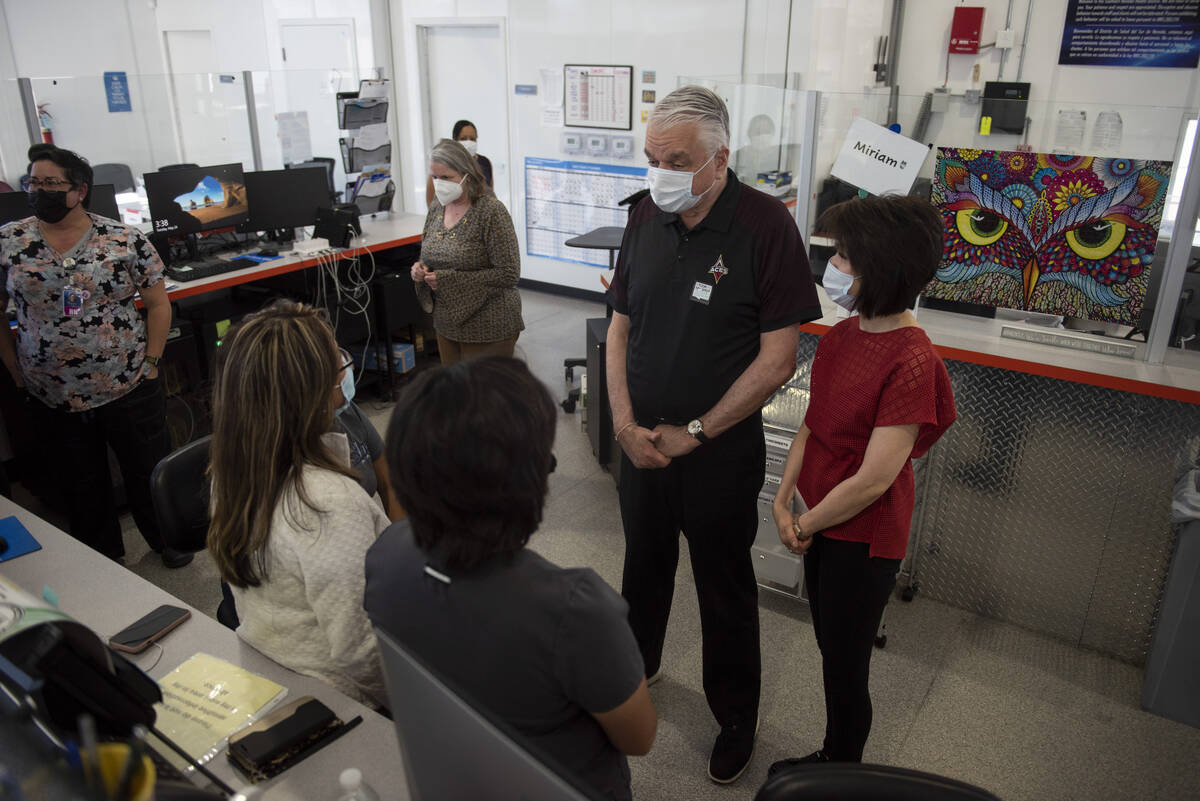COVID hospitalizations grow, but drop in cases may be misleading
COVID-19 hospitalizations continue to inch up in Clark County and in Nevada, even as one metric shows confirmed cases dipping, though officials caution that the growing use of at-home tests is leading to undercounts.
Hospitalizations are increasing in both general wards and intensive-care units, but hospital infrastracture “is not being stressed by the disease,” the Nevada Hospital Association said in a report released Wednesday.
Numbers of hospitalizations are considered a better indicator of disease trends than reported numbers of cases, which don’t capture positive results from rapid tests taken at home. Hospitalizations also better reflect the toll a disease is taking on communities, since infections now frequently result in mild symptoms.
Omicron variants, which are “extraordinarily contagious,” continue to infect significant numbers of people, including those who have been vaccinated or who have previously been infected, though many of these cases produce mild symptoms, said Dr. William Schaffner, a professor of infectious diseases at Vanderbilt University.
“Because this virus is so contagious, it keeps seeking out unvaccinated people or people who are only partially vaccinated, who become ill enough to be hospitalized,” said Schaffner, a national authority on COVID-19. Fully vaccinated individuals who are older and medically fragile are also susceptible to becoming severely ill and requiring hospitalization, he said.
According to the hospital association, the Federal Emergency Management Agency “is anticipating that these gradual increases in hospitalizations will continue for the next four weeks.”
The current number of people hospitalized in Clark County with confirmed or suspected cases of COVID-19 increased to 276 from last week’s 230, according to data released Wednesday by the Nevada Department of Health and Human Services.
According to the U.S. Centers for Disease Control and Prevention, 3.4 percent of staffed inpatient hospital beds in Clark County are occupied by COVID-19 patients.
The two-week moving average of daily fatalities for both the state and county held at one, according to the state health department.
Cases undercounted
Clark County’s weekly rate of new cases per 100,000 population increased to about 256 from 217, an increase of 18 percent, according to the CDC.
Nevada health department data shows that the two-week average of daily confirmed new cases for the county dipped to 599 from 611. Statewide, the figure increased slightly to 773 from 761.
Officials acknowledge that counts of confirmed cases can be misleading. The CDC estimates that from early December to the end of February, there were more than three infections for every case reported. This estimate is based on a new study showing rising antibody levels from infection in people across the country, a CDC spokesman said in an email.
“The ratio of estimated infections to reported cases during the Omicron period is the highest it has ever been,” said the spokesman, who noted that the use of at-home rapid tests tripled from December to March.
“Decreased disease severity and increased use and availability of home tests may partially explain the underreporting of cases during Omicron,” he added.
Summer prediction
Community levels for COVID-19 remain medium in Clark and Washoe counties, and low throughout the rest of the state, according to the CDC, a metric based on hospitalizations and case rates.
Community transmission, a separate metric, remains high throughout most of the state, according to the CDC, High transmission is defined as a case rate of more than 100 per 100,000 people or a test positivity rate higher than 10 percent. Clark County’s test positivity rate has climbed to 27.08 percent, meaning that more than one in four people taking a PCR test receive a positive result.
Waste water surveillance in Clark County shows the highest levels of coronavirus since the beginning of the pandemic, except for during this winter’s surge. Scientists analyze virus that has passed through the body into sewage, a system that can detect increases in infections before testing does.
Schaffner said he expects hospitalizations to continue to rise over the summer, thanks to the omicron variants, which are dominant in Nevada and throughout the country. Both Pfizer and Moderna are developing booster shots specifically for omicron variants. The aim, he said, is for these boosters to be ready by the fall.
Meanwhile, there have been 690,370 total confirmed COVID-19 cases across Nevada, with 521,284 in Clark County, according to state data. The state reports 10,935 total deaths, including 8,548 in Clark County.
In both the state and the county, roughly 57 percent of people ages 5 and older have been vaccinated.
^
Contact Mary Hynes at mhynes@reviewjournal.com or 702-383-0336. Follow @MaryHynes1 on Twitter.

















